
In this article, we’ll explain what it means to opt in WhatsApp and why it’s important to businesses. We’ll also go over the ground rules and best practices for getting opt-ins and provide examples of some opt-in methods. With this information, you’ll be able to ensure you have your customers’ consent to send them messages, so you can make the most out of using WhatsApp API. Let’s get started!
What is WhatsApp Opt In
Businesses can contact individuals on WhatsApp if they have shared their mobile phone number and given explicit opt-in permission to receive messages or calls from a specific business. But what exactly is a WhatsApp opt-in?
A WhatsApp opt-in refers to the process through which customers explicitly consent to receive message templates from a business via WhatsApp. This consent is essential due to WhatsApp's strict messaging policies, which limit when businesses using the WhatsApp API can reach out to customers
WhatsApp API has a 24-hour window to respond to customer-initiated messages or session messages. Outside this window, businesses must use message templates to initiate a conversation.
Note: Starting March 2025, WhatsApp is updating the way they send marketing messages to users, based on their engagement rates of previous marketing messages. For example, if a user hasn’t engaged with many marketing messages, they will receive fewer marketing messages. This is to ensure that users who are more receptive to marketing messages are more likely to receive them.
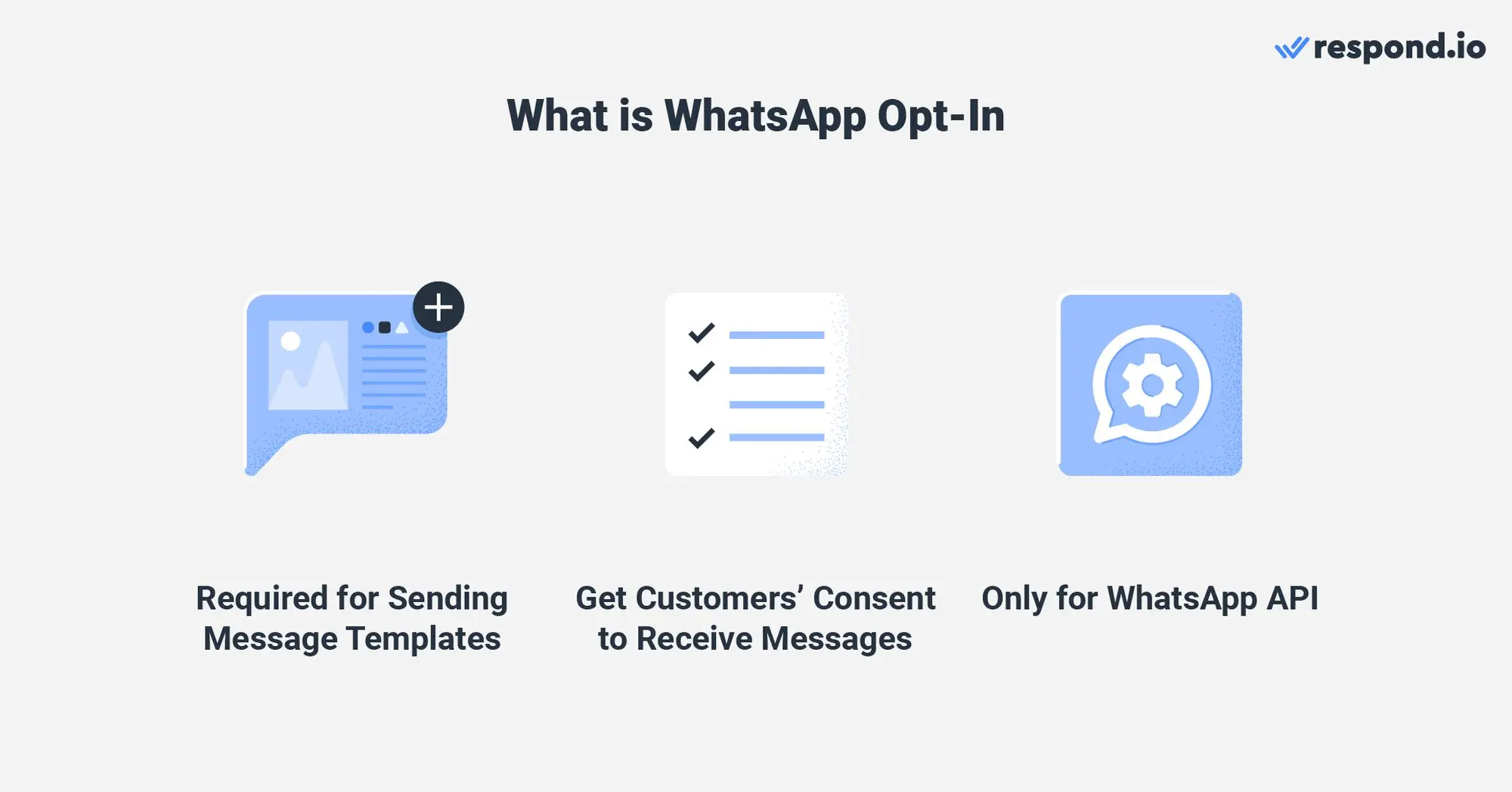
Do note that opt-ins are only necessary for WhatsApp API users. WhatsApp Business App users can message customers at any time. An example of a WhatsApp opt in can look like this:
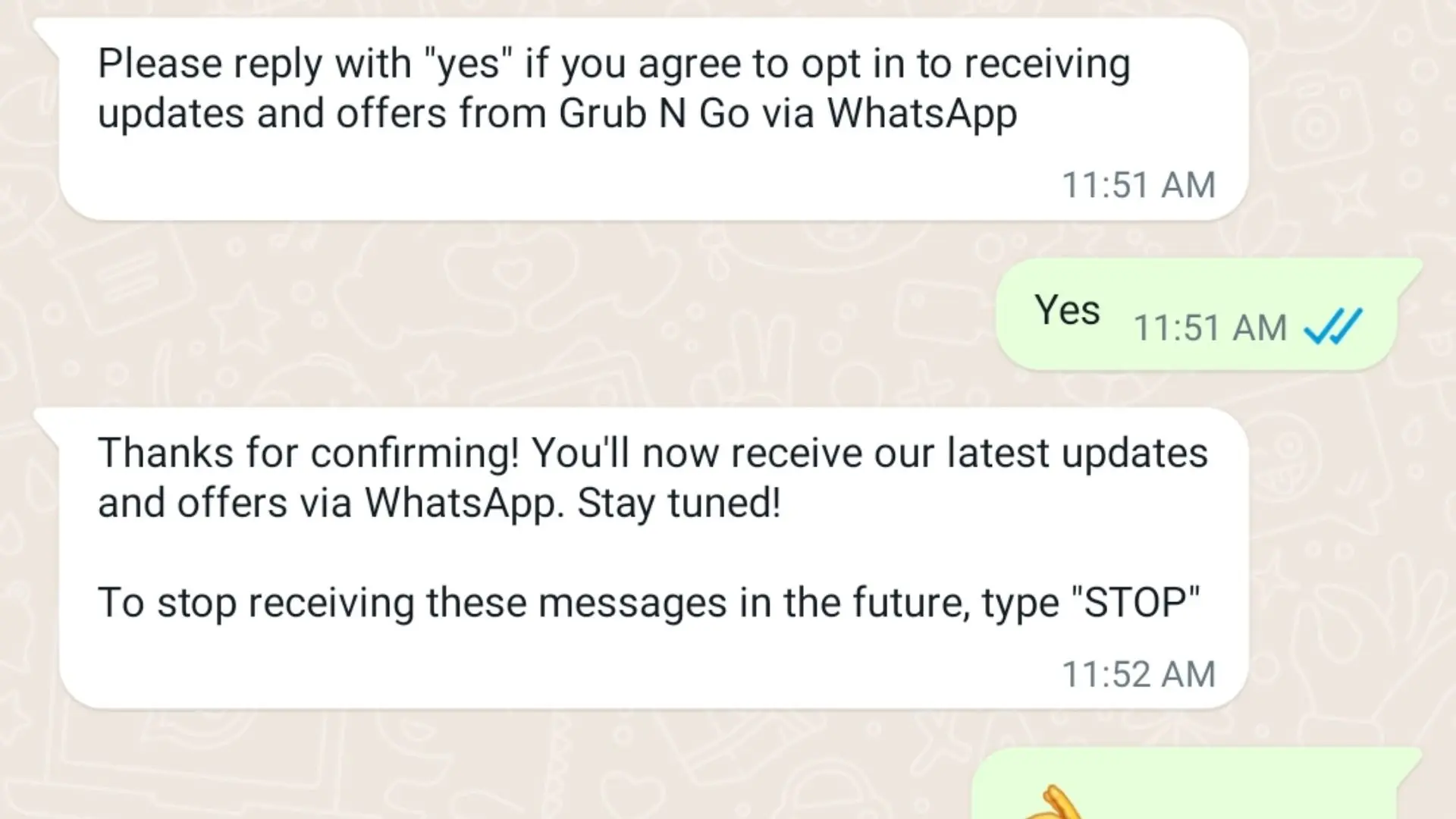
Since almost all businesses on WhatsApp API will send message templates, getting customers to opt in is an important process. Let’s go over why else you would want to get your customers’ opt-ins.
Why Collect WhatsApp Opt Ins
In addition to ensuring your customers consent to receiving your message templates, there are other reasons to collect WhatsApp opt ins.
Sending messages to customers who didn’t consent can lead to them blocking you or reporting your account for spam. Your business quality rating can be lowered by these reports, which may result in your account being rate limited or even suspended.
In some regions, opt-ins are necessary for businesses to comply with privacy laws and regulations. For example in Europe, businesses have to follow the General Data Protection Regulation (GDPR) when it comes to communicating with customers.

By obtaining opt-ins, you demonstrate to your customers that you respect their privacy and are committed to transparent, responsible and ethical communication practices. You also increase your business’ credibility and customer trust.
Opt-in subscribers are more likely to engage with your business, as they have explicitly chosen to receive messages and are therefore more interested in the content you’ll share. This is especially true when sending scheduled WhatsApp broadcast or WhatsApp bulk messages for marketing purposes.
Improving your return on investment (ROI) on your WhatsApp marketing campaigns by sending messages only to subscribers who have explicitly opted in, which ensures that you are using your marketing efforts effectively.
Next, we’ll run through some best practices for obtaining WhatsApp opt-ins.
Turn conversations into customers with respond.io's official WhatsApp API. ✨
Manage WhatsApp calls and chats in one place!
Best Practices for Obtaining WhatsApp Opt Ins
Make sure that your business complies with applicable law when it comes to opt-ins. Start by communicating the value of opting in to receive messages from your business on WhatsApp.
Opt-ins need to be optional — for example, you can’t force customers to opt in to complete a purchase. In addition, you must clearly state your business name so customers know who they’re opting to receive messages from.
Businesses must establish that a person is opting in to receive messages from the business only over WhatsApp. If a customer opts in for messages from you only via other channels, don’t send them messages over WhatsApp.
Be clear about the various types of messages you'll send, such as order updates, relevant offers, newsletters and product recommendations. Give your customers a way to select what they want to opt in to via a list of message types or different prompts or messages.
This way customers can decide which types of messages they want to receive. If a customer opts in to only receive order updates, you aren’t allowed to send them unrelated messages like new product notifications or promotions.
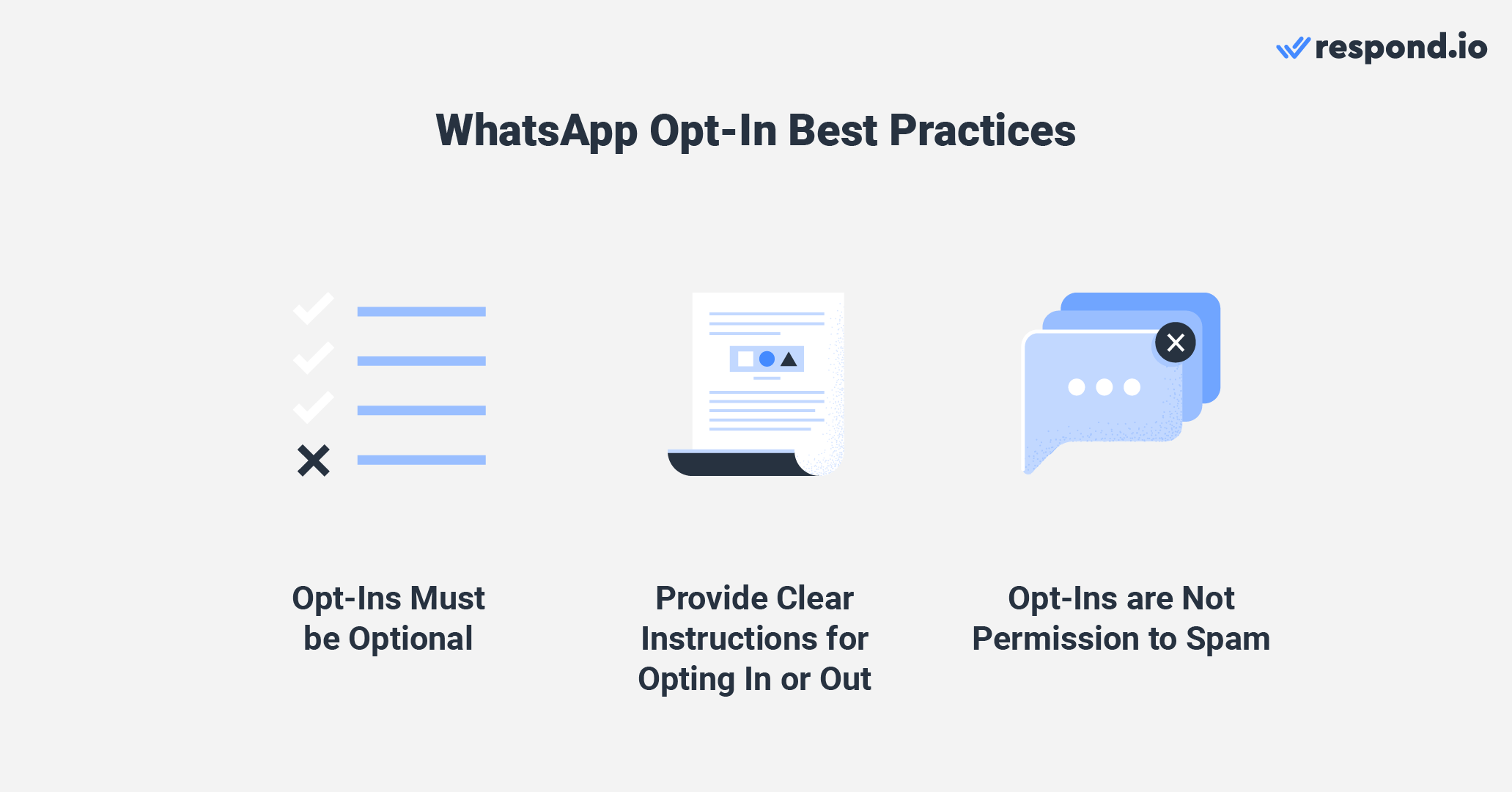
Ensure opt-in and opt-out flows are clear and intuitive for users. Provide clear instructions for how people can opt out of receiving specific categories of messages, and honor these requests.
Monitor your quality rating, especially when rolling out new opt-in methods. If your WhatsApp quality rating drops after a new opt-in method, it's possible customers didn't understand what they signed up for.
Use that feedback to clarify opt-ins by rewriting the request or making tweaks like using simpler language, larger fonts and different colors.
Lastly, opt-ins do not give you permission to spam your customers. WhatsApp takes spam seriously and can suspend your business for such activities. Next, let’s see how you can obtain opt-ins from your customers.
How to Get WhatsApp Opt In
As long as the opt-in method meets the above requirements, it will be compliant with WhatsApp’s policies. Get opt-ins from different platforms by knowing your target audience and the best channels to reach them.
Collect Opt-Ins when Customers First Make Contact
One of the best methods to get opt-ins is by asking the customers who reached out for inquiries or support over WhatsApp if they’d like to opt in for future messages. Since they initiated the chat, they would be more willing to receive additional messages from you.
Convert Website Visitors to WhatsApp Contacts
A lot of new customers will find out more about your business through official websites and social media pages. Why not leverage these platforms and gain opt-ins from there?
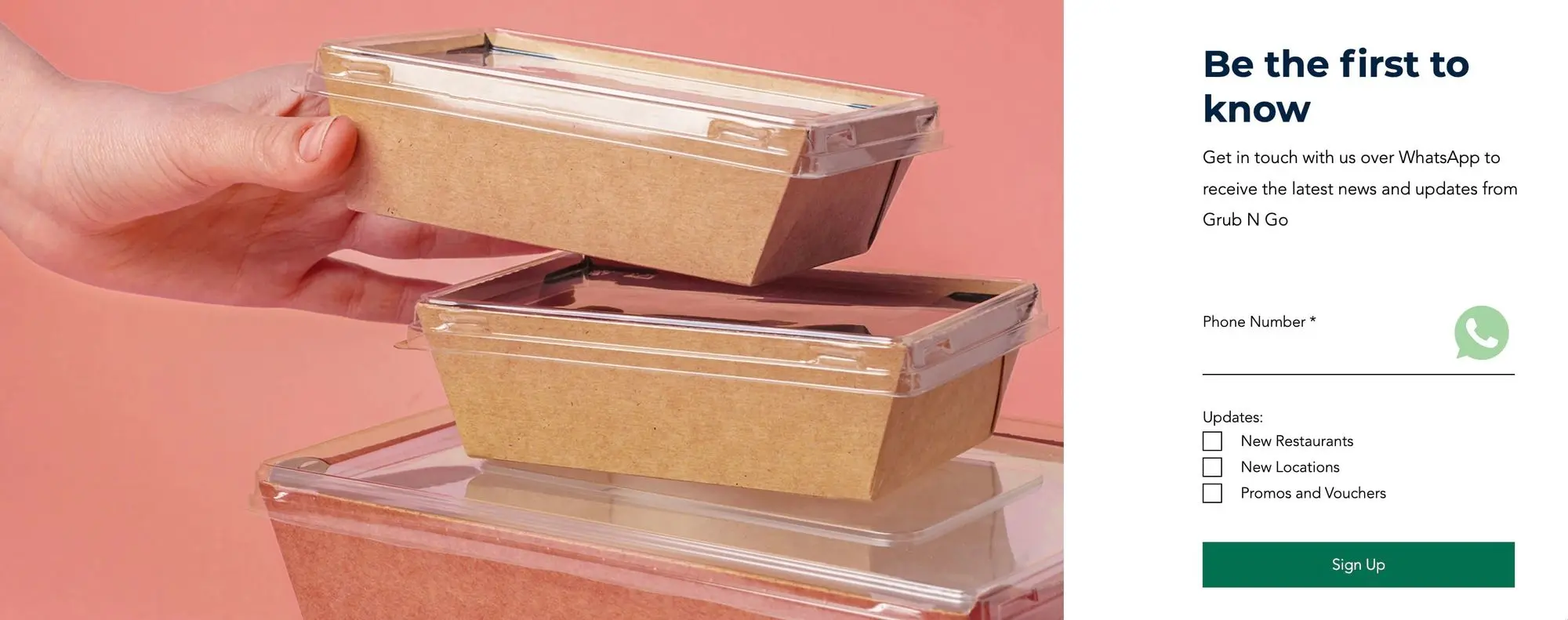
Websites can display contact forms for customers to easily opt in to messages from your business. Simply create a form for customers to fill in with their details and opt-in choices.
Use our handy WhatsApp Link Generator or WhatsApp webchat widget to get customers talking to your business so you can invite them to opt in to receive additional messages.
Use Existing Conversations and Process Flows
Customers are more likely to opt in during purchases when they can use WhatsApp for important notifications like order confirmations, boarding passes, and delivery notifications.
For example, by adding optional checkboxes to indicate they want to receive these notifications during the checkout process, it becomes convenient for customers to opt in for updates from your business while they complete their transactions.
Collect WhatsApp Opt-Ins from Other Channels
During an SMS conversation with a customer, you can ask them if they would like to receive further messages from your business over WhatsApp.
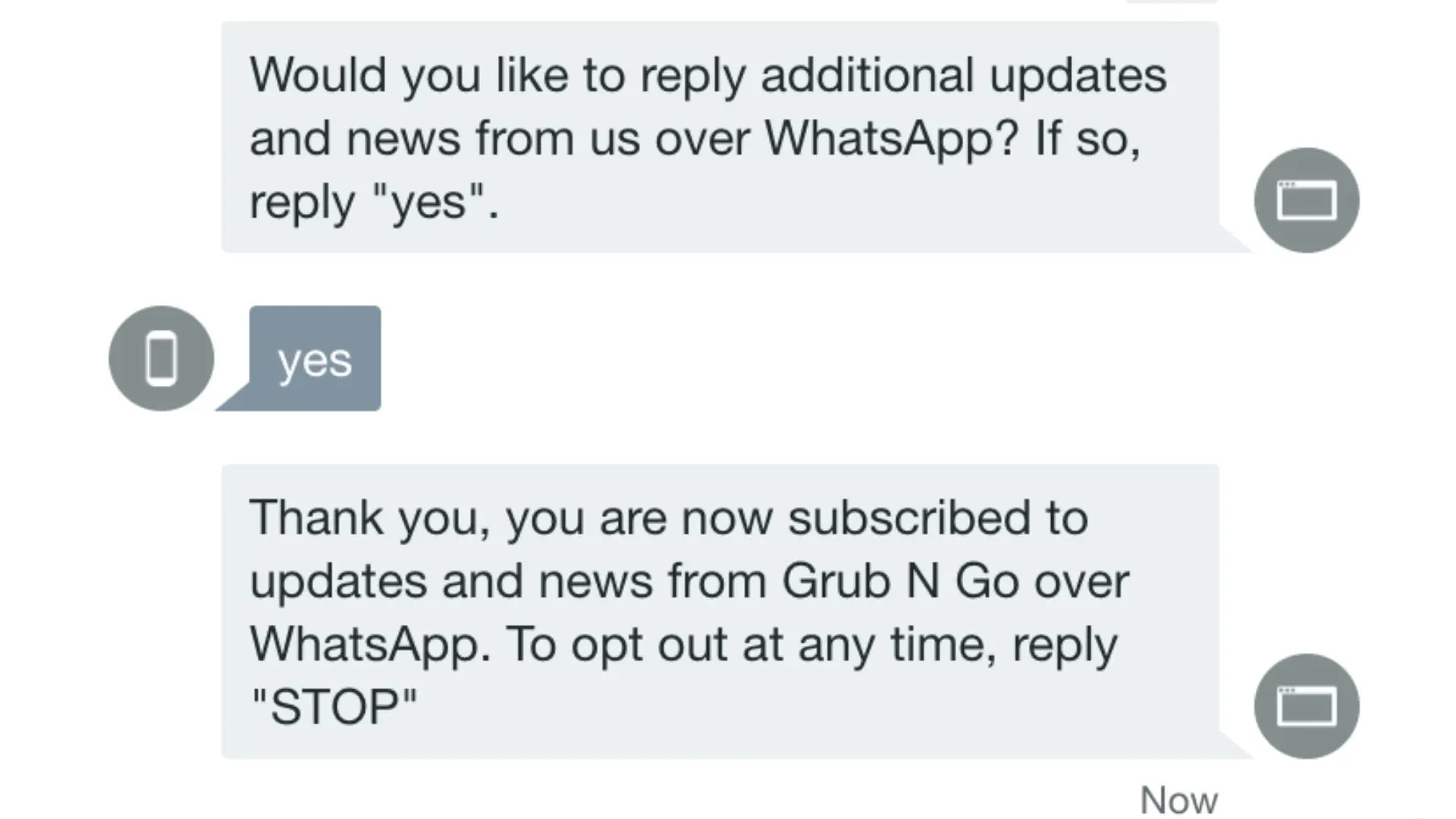
Opt-ins can also be collected over the phone using an interactive voice response (IVR) flow. Customers who call you can be asked if they would like to opt in to receive WhatsApp messages from your business.
You can also get customers’ consent to WhatsApp messages in person or on paper. Simply get their signatures on a physical document for opting in to your WhatsApp messages.
Use WhatsApp Tools like Click-to-Chat Ads, QR Codes and more
You can also run WhatsApp click-to-chat ads for customers to chat with your business. During or after the conversation, you’ll be able to ask them if they would like to opt in to receiving future messages from your business.
If you’re at an event or have a physical retail location, these ads can even be in the form of QR codes that customers can scan with their phones. You can add a message like “Want to stay in touch with us on WhatsApp? Scan this QR code.” to make it clear.
In conclusion, the opt-in process is essential for businesses using WhatsApp API to ensure they are compliant with WhatsApp’s guidelines. We should make the opt-in process as easy as possible for customers, while still being clear and informative.
Don’t have a WhatsApp API account yet? Try respond.io and its WhatsApp Business API for free and take your business messaging to the next level. Our customer conversation management software does more than just send message templates.
In addition to benefits like supporting numerous agents or teams and chatting on multiple channels or accounts from a single platform, you’ll be able to send automated replies and build chat automation for WhatsApp sales and support.
If you like how respond.io can help your business, why not sign up for a free trial today?
Turn conversations into customers with respond.io's official WhatsApp API. ✨
Manage WhatsApp calls and chats in one place!
Further Reading
Found this article useful? Here are a few more that might interest you:






































 Electronics
Electronics Fashion & Apparel
Fashion & Apparel Furniture
Furniture Jewelry and Watches
Jewelry and Watches
 Afterschool Activities
Afterschool Activities Sport & Fitness
Sport & Fitness
 Beauty Center
Beauty Center Dental Clinic
Dental Clinic Medical Clinic
Medical Clinic
 Home Cleaning & Maid Services
Home Cleaning & Maid Services Photography & Videography
Photography & Videography
 Car Dealership
Car Dealership
 Travel Agency & Tour Operator
Travel Agency & Tour Operator




